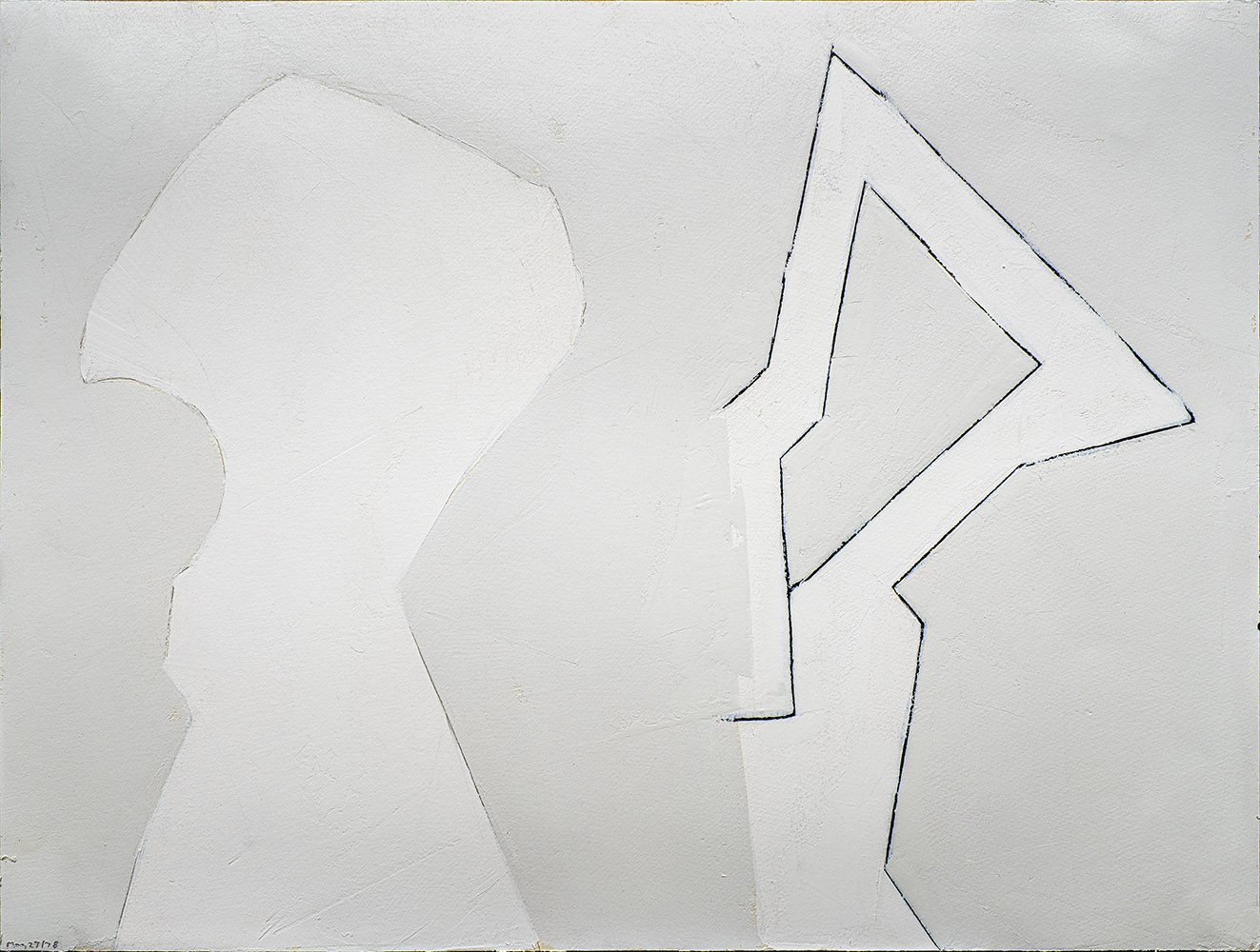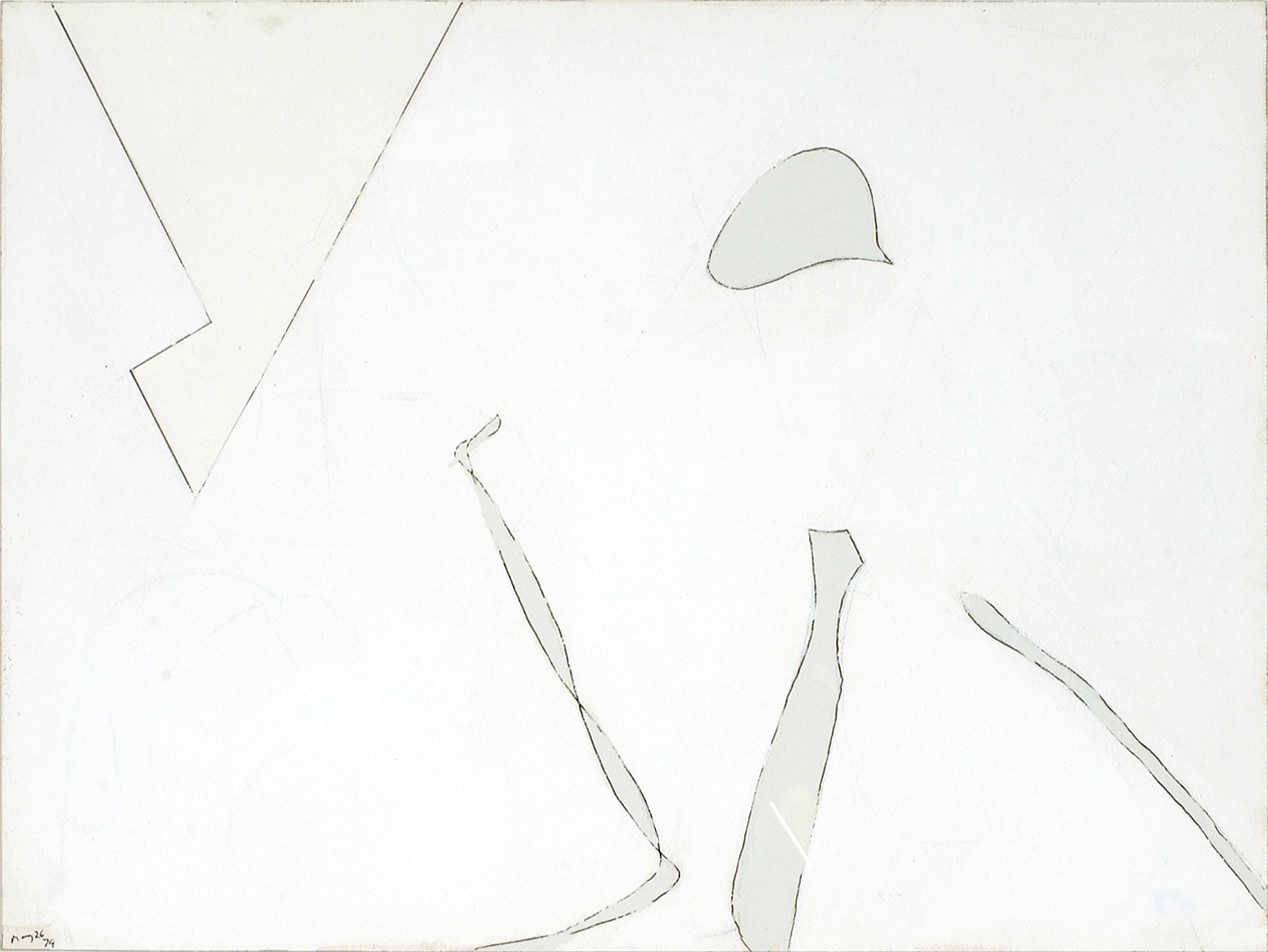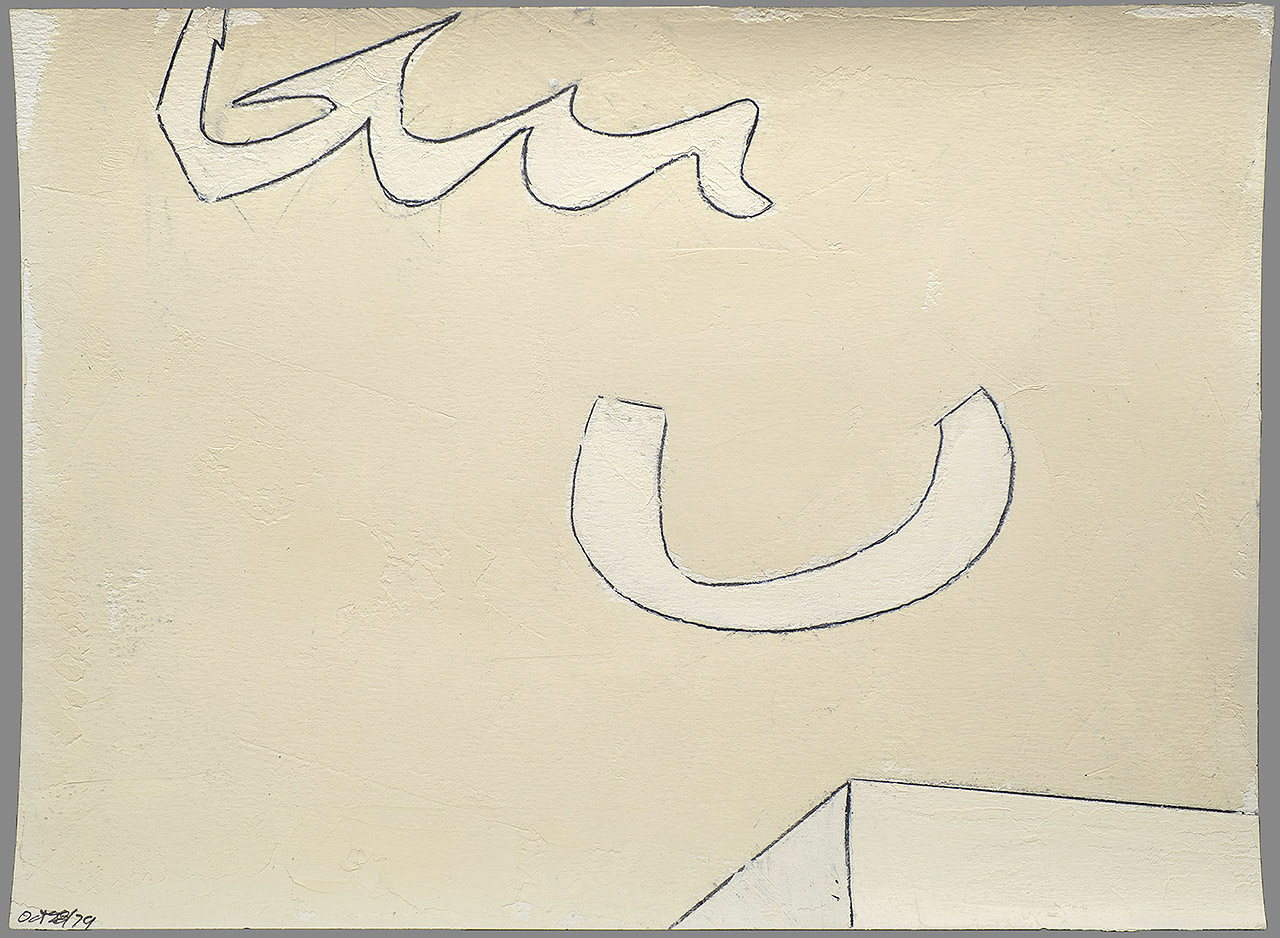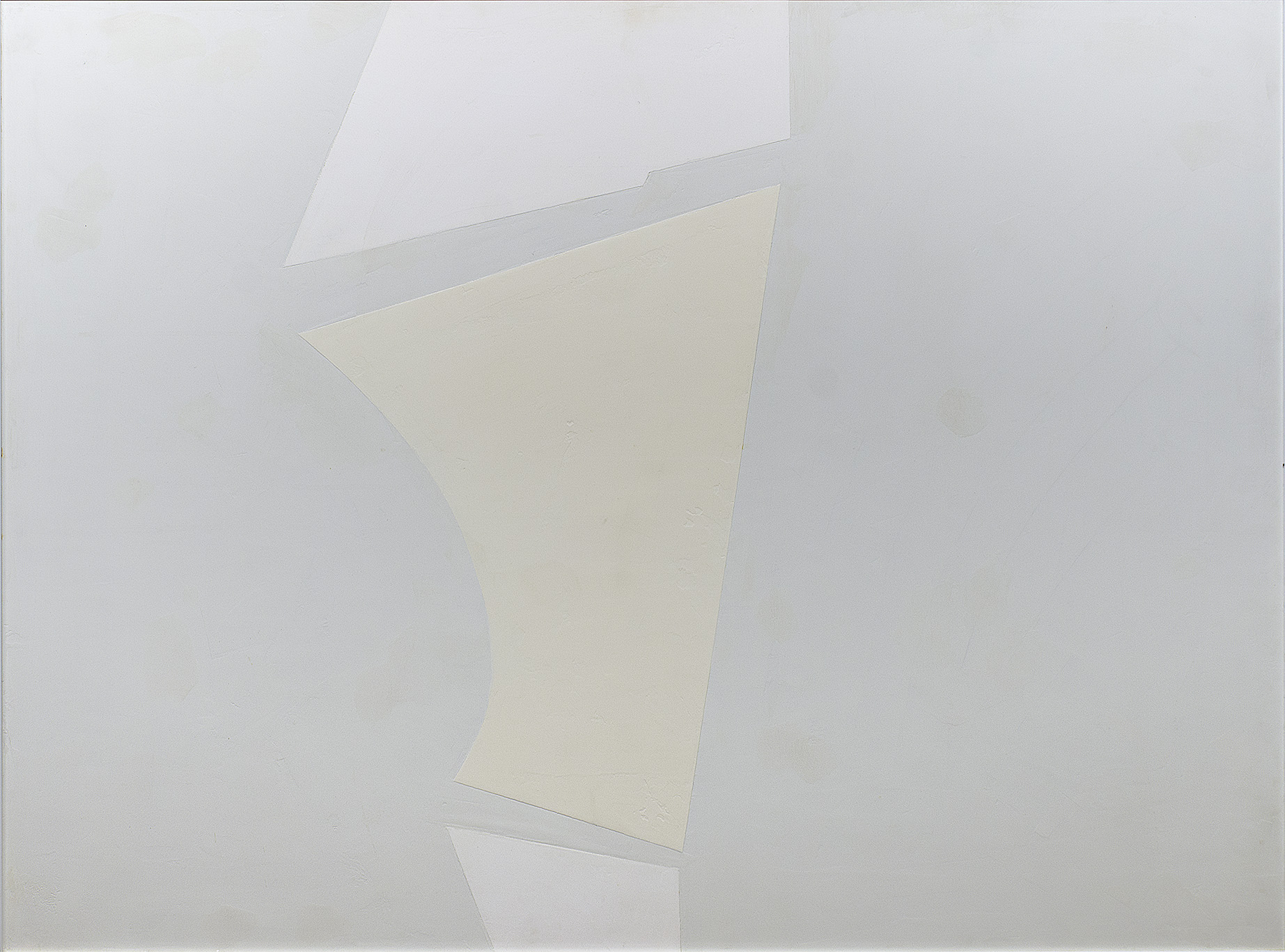“a superb abstraction of a different order”
Abstraction in modern art is most commonly a rational reordering of observed things, as in a Cubist still life. It can at another extreme be rearrangements of formalized concepts, such as the elements of Euclidean geometry. Like other types of painting, abstractions can also be drawn from memories, recalled experiences that may have happened just now or long ago, have lost their clarity, combined or otherwise become different from how they first met the eye and the senses. Here the unconscious may play a part equal to or greater than that of intellect.
Ronald Bloore is a romantic Euclidean, interested in constant speculation rather than a final order. He is also a teacher and talker with positive, sharply defined, tersely expressed opinions. These often display a nice balance between humour and scorn. He also has a strongly spiritual side of Emersonian cast but tinged with non-rational mysticism. It is this very private sense that nourishes and perhaps at bottom inspires his art, an art that might be uncomfortably austere were it not warmed and humanized by memories.
↑ ↓ ↑ ↓

Sackville Sketch, May 29 1978 (53rd birthday), 46 x 61cm, pencil, ink, oil on paper
(reproduced with the article)
Click to see Larger.
Abstraction can proceed from colours as well as shapes. Bloore has preoccupied himself for years with the nuances of that abstraction of all colours as mixed light that we call by the flat word, white! He uses, by his own count, 26 varieties of white, playing one against another, varying them with textures and the shadows of their edges as well as with tones. His whites may occasionally be those of eggs or snow, skin or fur, linen or stone, and other palpable things but more essential are the whitewashed sculptures that are the midget churches of Aegean islands and certainly the walls and fissures and fleeces of clouds. But this cloudbank of abstracted cloud whites is made of the residue of big and thick clouds belonging to the daylight hours furthest removed from the excesses of dawn and sunset, untroubled by the exaggerations of tempests, untouched by the moon, but no less romantic for all that; in choosing his palette he is more the Van de Velde than the Descartes and not at all the Mondrian.
We have rarely been permitted a glimpse of Bloore's working methods, but a fresh departure has persuaded him to share a bit of the process along with a striking example of the finished product.
↑ ↓ ↑ ↓

May 21, 1978, pencil, ink, oil on paper, 46x61cm, reproduced with the article
This work hung in the Art Company small works show of 2003 on the site here.
The Byzantine Light series came to an end after some 70 paintings and countless drawings.* As is shown here (above), a new kind of drawing or sketch has been emerging since the summer of 1978 and these are already leading to a different sort of painting from anything previously seen in his career. They are still white on white, but with a strikingly altered and fresh imagery. New ideas are flowing out of the artist's unconscious. He finds himself putting them down in their first tentative form at six in the morning (and is impatient for the end of his classes at York University and the beginning of an uninterrupted summer of painting). These sketches alone are significant enough to justify comment on a selection from among them.
These works in ink and oil on paper have more the character of drawing than painting, suggest something of the quality of studies but nonetheless are complete statements. A number of them have already been transformed into paintings with relatively minor modification. Bloore is not one to analyze his own works, at least for quotation, so one is free to make of them what one may. The majority happen to be horizontal, but neither they nor the few vertical sheets work except in the direction indicated by the artist. This strongly suggests that the degree of randomness or chance in his method is at this stage very slight. All make use of a small number (two to four) of nonrepresentational shapes or fragments of flat shapes. These appear, sometimes in positive-negative associations, with or against tonally inflected but mainly depthless grounds.
↑ ↓ ↑ ↓

May 26 1979, pencil, ink, oil on paper, 46x61cm, Nickle Arts Museum, Calgary
Five other such works in the Art Gallery of Peterborough can be seen here.
The shapes and the methods, almost automatist, are unlike any work of recent years. Gone are the definite geometric figures, the clusters of short parallel raised lines, the stars, the mammary allusions, the patterned silences. There are now surprising disharmonies of ectoplasmic curves and jagged angles engaged in dialogues variously of argument or restless movement. Something is happening, but we don't yet know quite what from these disconnected frames. There is the fascination of an unfinished serial, complicated by the unexpected presence in several of them of subliminal hints of either reclining figures with upraised knees or the heads of birds. Most of these amorphous shapes begin and end outside the picture plane, many have fully defined edges more related to direction than to description, but some are incomplete and indicated by startlingly hesitant lines. Their relations in depth can be extremely ambiguous, for space is frequently implied if formally annihilated. Here they differ markedly from the paintings, since the method prohibits the relief which is integral to the large works. Some of the figuration looks like fragments of the big, extremely complex wheels that, often in pairs, dominated his paintings of nearly 20 years ago [1960-61]. But where those wheels were as fixed as the wheels of the stone chariots of the sun god at Konarak, these fragments are actively going somewhere, like the micro- organisms that move with such inexplicable but compelling force on a laboratory slide. In one case there is a sense of joyous, all-out running of the kind Picasso abstracted in an absolutely different way in the period when he was so closely associated with ballet and between-rehearsals romps on the beach.
↑ ↓ ↑ ↓

A smaller example from Oct. 28 1979, pencil, ink, oil on paper, 23x31cm, click to see larger.
These works on paper have been issuing in a steady stream since last summer. The large untitled new painting illustrated below, a 48 by 92-inch oil on masonite, may show where they are tending to go. It is certainly not a summary of previous work, but a very Minerva of apparently parthenogenetic marvels. It testifies of course to Bloore' s unaltered faith in the inexhaustible expressiveness of whites as both faintly tinted light and as shadow-casting pigments. It is in that sense one of his most fully definite works to date, but it is redefining in new terms his unique fusion of spirit and substance. Here there is a remarkable balance of stasis and flux. The calm space is dominated at the left by a floating pattern of overlapping rows of softened meanders that form themselves into a slightly flattened diamond. This is positioned somewhat as Robert Goodnough places his dense, shapeless swirls of leaflike fragments, but has an entirely different effect. From it two narrow streamers of unequal thickness stretch out horizontally and parallel all the way to the right edge. These figurations have a perceptible thickness in ivory and fleece whites against a smooth, grayed-white ground. It is at once serene, inevitable and as compact with force as a flight of northward-migrating birds without in the slightest representing such an observable event. It is a superb abstraction of a different order, a symbol of contained, purposive energy, a shapely diagram of what civilization aspires to be within a natural order that appears immune to reason.
↑ ↓ ↑ ↓

Untitled Sackville Series, 1979, 91 x 122cm, oil on masonite, click to see larger.
This work showed at the Wallace Galleries in Calgary in 2016.
* - It is true that in 1977, “the Byzantine Light series came to an end after some 70 paintings,” but there were not “countless drawings” in that series at all, in the sense of independent works - in fact only one is known of and it is here and there two oil sketches, one of which is here. There were a few maquettes (one is viewable in high resolution here) but there were indeed many, many ideational sketches on random paper such as the four in Peterborough shown here.
